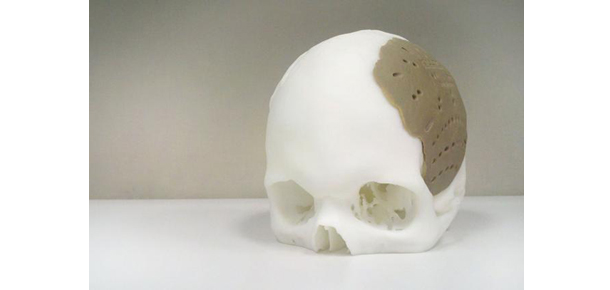An unnamed patient recently had 75 percent of his skull surgically replaced with a 3D printed implant. The patient’s head was scanned, and then a custom digital model of the implant was created before finally being fabricated in a 3D printer.
On February 18, Oxford Performance Materials in Connecticut gained approval from the U.S. Food and Drug Administration to begin providing 3D printed bone implants. The implants are made of a strong thermoplastic (polyetherketoneketone) and can be fabricated to fit a patient’s need within two weeks. One standout feature of the implants is the porous surface meant to encourage bone and cell growth around the implant. Currently, only cranial implants are being made but plans are already set for additional models.
Scott DeFelice, President of Oxford Performance Materials, said:
We have sought our first approval within cranial implants because the need was most compelling; however, this is just the beginning. We will now move systematically throughout the body in an effort to deliver improved outcomes at lower overall cost to the patient and healthcare provider.
The implication of this technology is obvious and exciting. According to its makers, nearly 500 people a month, in America alone, could benefit from these implants. Whether bones have been damaged by disease or trauma, they can soon be replaced by custom implants. Wounded soldiers, drivers, and construction workers stand out as potential beneficiaries.


It’s
amazing what they are doing with the 3D printing tech. 3D printing is
my most followed board on pinterest. They can (or will be able to print)
food and cells (bio printing), medical 3D printing has amazing
potential, print with sand, stone, printing
house, printing moon bases out of materials found on the moon, space
stations. The resolutions offer crazy details and they can print all the
way down to 285 micrometers. 3D printing is definitely a technology to
get techcited about!